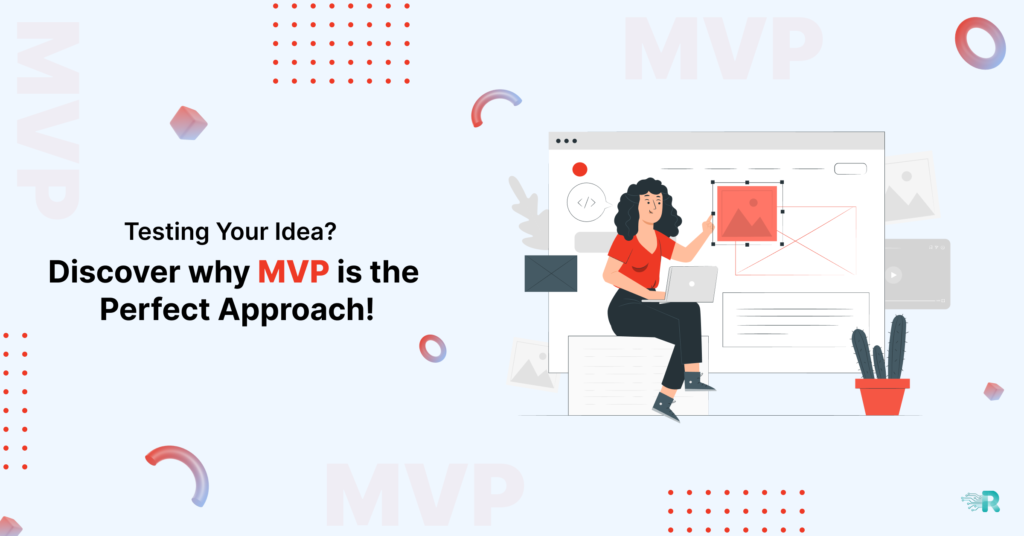Introduction
The proverb “Fail fast, learn faster” is more applicable than ever in the changing business environment of today. Enter the idea of Minimum Viable Product (MVP) testing—a strategic strategy that has completely changed the way that products are developed and validated. MVP testing is more than just a trendy term; it’s a tried-and-true strategy for accelerating the development of your product from concept to market. Its foundations are solidly established in the Agile methodology and Lean Startup principles.
The MVP Experience
An MVP is fundamentally the condensed essence of your product concept—the absolute minimum that shows people its value. Making an MVP allows you to test your product with the most basic functionality, just enough to meet the needs of early adopters. With this strategy, you may quickly collect priceless user input while minimizing your use of resources and time.
Testing iteratively to improve continuously
The iterative strategy is promoted by MVP testing. You deploy a minimal version and get user input rather than spending months or years developing a fully-fledged product. With the help of this feedback loop, you may continuously develop features as you incorporate data from the actual world. The goal of iterative testing is to adapt to the changing demands of users, not to achieve perfection from the outset.
Early Validation and User-Centric Design
User-centric design is the backbone of MVP testing. You may make sure that the product appeals to the target market by involving users early on. MVP testing provides early validation that your product solves a real need and gives people a taste of the answer they’ve been looking for. This proactive validation lowers the possibility of creating a subpar result.
The ideals of lean startups and agile methodologies
The Agile methodology and the principles of the Lean Startup serve as the forefathers of MVP testing. A key component of the Agile process is the emphasis on flexibility, collaboration, and client feedback. The Lean Startup mindset promotes quick experimentation and validated learning. By combining these techniques, MVP testing enables you to pivot or proceed based on facts rather than preconceptions.
- Prototyping and Conceptual Proof of Concept: Making a prototype that demonstrates the essential features of your product is the first step in MVP testing. You can see the finished product and lay the groundwork for iterative testing thanks to this proof of concept.
- Collecting User Feedback: By releasing the MVP, you may gather essential user feedback. This first understanding aids in understanding user behavior, problems, and preferences, leading to further development.
- Feature Prioritization and Refinement: Prioritization of features is influenced by user feedback. By expanding and improving the MVP depending on what people value most, you may avoid developing features that may not be popular.
- Beta Testing and Launch Plan: Beta testing can begin once your MVP has been improved. In this phase, a controlled rollout to a bigger audience allows you to make adjustments to your product based on actual user feedback.
- Validation and market investigation: MVP testing offers a venue for market research in addition to validating your product idea. You gain more knowledge of the needs and market competition in your target market.
- Risk reduction and ongoing development: Through MVP testing, the risk of making a substantial investment in a product that might fail is lowered. If you employ an iterative design process and include user feedback, you can be certain that you are producing what users genuinely desire.
How to get a product that fits the market
MVP testing is your guide to attaining product-market fit. It enables you to better match your offering to the needs of your target market. Iterative testing of your product increases your chances of producing something that resonates with users and provides value.
Making data-based judgments
MVP testing is a methodology and a data-driven strategy, not a whim. With each iteration, you gain new knowledge that helps you decide on feature additions, pivots, or even significant course changes.
Supporting Early Adopters and Embracing Change
In MVP testing, change and uncertainty are welcomed. It pushes you to change direction when necessary and do so in light of input from the outside world. Early adopters are essential to this process since they offer the first insights that influence how your product develops.
Conclusion
MVP testing stands out in the competitive world of product development as a shining example of effectiveness, creativity, and customer-centricity. By putting a priority on user feedback, supporting iterative testing, and adhering to Agile and Lean principles, MVP testing paves the way for successful product launches. An MVP is more than simply a product with a limited feature set; it’s a methodical approach that emphasizes learning, reduces risk, and directs your product toward a successful future.



